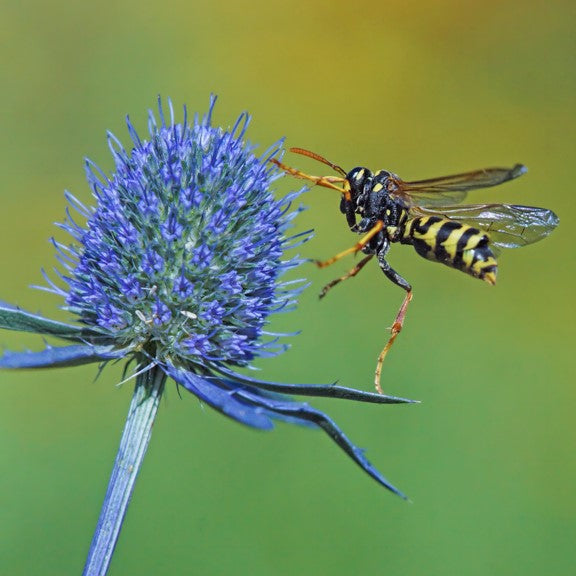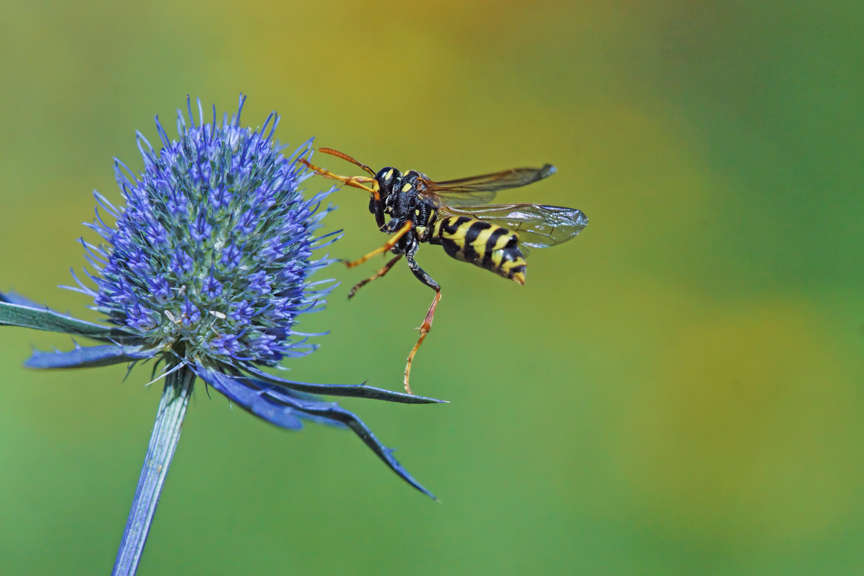
June Garden Solutions
Powdery Mildew & Insect Pests
Pests and disease are common in summer with the warmer temps and abundant food in the garden. Our garden gurus have been getting a lot of questions about these pesky visitors, and we have answers about the best way to take care of them to ensure your plants stay happy and healthy throughout the entire growing season. This month, we’re talking about powdery mildew, leaffooted bugs, caterpillars, flying pests, and lawn grubs.
Powdery Mildew
Powdery mildew is first noticed on leaves, showing as small white or gray blotches. Powdery mildew becomes less common as our average daytime highs stay above 85 degrees, so there is a good side to hot summers.
Dry dusty conditions favor powdery mildew, and mulch keeps down heat and dust. New tender growth is also prone to powdery mildew, and choosing organic fertilizers helps significantly by keeping growth reasonably paced.
For control, we also recommend oils, including Horticultural Oil and Neem Oil, or Liqui-Cop® copper fungicide spray.

Powdery mildew on tomato plant.
Leaffooted Bugs
Perhaps you have noticed an interesting insect called the leaffooted bug? The hind legs have a distinctive flattened part that looks like a leaf. The mouth part tries to pierce fruit to get at the seeds within. But the leaffooted bug is not good at it, and you will most likely see whitish blemishes on the skin where it tried, and failed, to get inside. The best time to keep the population down is when they are at the nymph stage, using Bonide® Insecticidal Soap. With a little extra time, hand removal works pretty well too.

Leaffooted bug.
Photo courtesy of UC Davis IPM.
Photo courtesy of UC Davis IPM.
Caterpillars
Just a friendly reminder that we welcome caterpillars in our butterfly gardens, especially on milkweed for the Monarch butterfly! However, there are two caterpillars that may need your attention. One is a cabbage looper, and the other is the hornworm. The looper moves by arching its back, like an inchworm. The other is the much larger hornworm, often seen on tomatoes.
Removing by hand can be effective, but if the numbers get high, we recommend Bonide® Super Insecticidal Soap® or Monterey Bt. Follow the directions for the best results. Both the soap and the Bt won’t harm beneficial insects.
Removing by hand can be effective, but if the numbers get high, we recommend Bonide® Super Insecticidal Soap® or Monterey Bt. Follow the directions for the best results. Both the soap and the Bt won’t harm beneficial insects.

Hornworm on tomato plant.
Flying Pests
For flying pests, such as flies and wasps or hornets, traps and lures are exceptionally effective, and we have several to choose from. The key is to place these traps far away from your picnic table and front door. Place them at a distance so they are lured away from you. Note that our traps will not harm pollinating bees.

Wasp on purple bloom.
Lawn Grubs
Last, but certainly not least, we have some advice for lawn grubs. Please mow the lawn tall, as short lawn is easily hurt by grubs and is easily burned in the hot summer. Water a little deeper and little less often to grow deeper lawn roots that can fight off grub damage. If a chemical treatment is needed, the best time to apply a pesticide in the lawn is now before small grubs become harder to kill large grubs. See our experts in the stores for the best option for your lawn.

